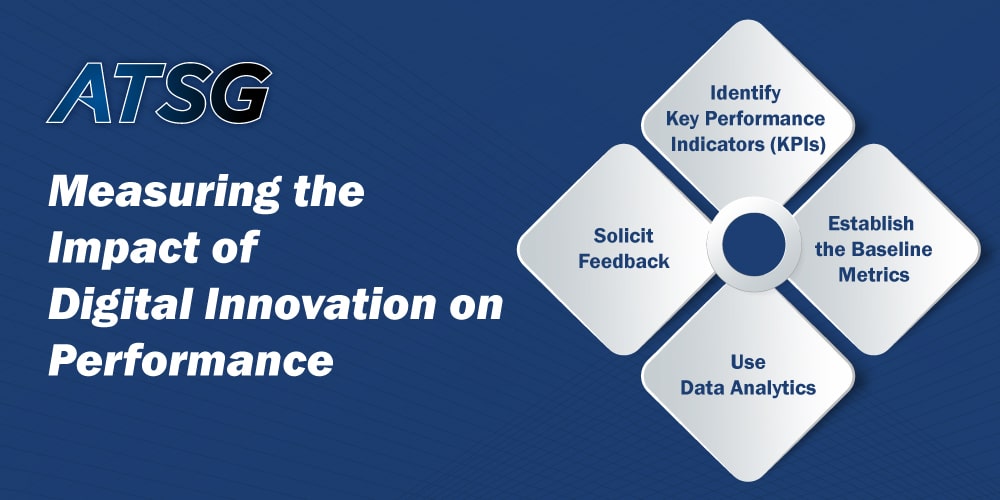As technology continues to advance at a rapid pace, the saying “adapt or die” has never been more applicable, particularly in the realm of information technology (IT). Today, staying abreast of technology has become absolutely necessary for businesses to remain ahead of the curve. But what exactly is it that enterprises must do to keep up with the latest technological trends and innovations?

The Role of the C-Suite in Fostering a Culture of Innovation
Today, the role of C-level executives has evolved significantly for businesses. Leaders that were once responsible for just overseeing a specific area of an enterprise are now expected to play a central role in driving digital transformation and innovation throughout the company.
Let us discuss some of the C-Suite roles that have witnessed massive evolution over the past few years, especially after the pandemic.
Chief Technology Officer (CTO) – Orchestrating Digital Strategies
CTOs are no longer simply technology experts. They are now charged with leading company-wide digital transformation endeavors, formulating digitalization strategies along with identifying the areas where new technologies can create value. Moreover, they play a critical role in motivating employees to embrace these new initiatives, and in building a culture that supports technology-driven strategic imperatives.
Chief Executive Officer (CEO) – Articulating the Case for Change
The role of a CEO encompasses several crucial responsibilities, including charting the course for the company’s strategy, spearheading its vision and culture, as well as presenting the business to the outside world.
In the digital age, CEOs must manage this hefty set of responsibilities within the context of a rapidly changing landscape. In fact, the success of digital transformation initiatives also hinges on the CEO’s ability to articulate the case for change and communicate a forward-looking strategy to every tier of the organization.
Board of Directors (BOD) – Holding the Management Accountable
Today, it is imperative that the board holds management accountable for a much wider range of goals and targets. The BOD needs to particularly focus on long-term innovation, and arrange investments to support those initiatives. Their focus must not be confined to just short-term financial performance.
At present, many technologically sound directors are better able to prepare an enterprise for long-term success. They can achieve this by advising on technological investments, selecting the right CEO for future needs, and managing their own learning and advancement along the way as well.
Chief Financial Officer (CFO) – Leveraging New Technologies
Similarly, CFOs must also have a vision and far-sightedness to leverage innovative solutions to automate the overall financial reporting processes and analyses of the enterprise. To effectively forecast in a constantly evolving business landscape, it is crucial for CFOs to maintain a forward-thinking mindset. They should analyze the impact of technology investments, identify growth opportunities and assess the costs and benefits. This will help them drive growth across the organization.
Strategies to Promote Collaboration and Continuous Learning
To foster a culture of innovation, and successfully navigate digital transformation, businesses can adopt the following-mentioned strategies to promote collaboration, experimentation, and continuous learning among the top leaders and the workforce.
- Build a collaborative work environment that encourages cross-functional teamwork, and breaks down silos.
- Adopt a data-driven approach to work and stay up-to-date on technological trends.
- Cultivate an innovative and creative culture that reinforces technology-driven strategic shifts.
- Identify and involve experts in the organization to ensure their voices are heard.
- Encourage continuous learning among senior leaders and board members to stay relevant and adapt to new changes.
- Seek out development and rotation opportunities for up-and-coming professionals to build strong digital and leadership capabilities.
- Embrace a customer-centric approach to innovation, by involving customers in this process as well. Use their feedback to improve and tweak product and service development processes.
- Create channels for gathering customer feedback; by actively seeking out customer input. Then, use data and analytics to better understand customer needs and preferences.
- Align the top team around a clear strategy, and ensure coherence across all functional areas and workgroups.
- Refine domain knowledge with training and skills development, to lead an enterprise-wide change.
Measuring the Impact of Digital Innovation on Performance
As there is so much going on on the technological front, measuring the impact of digital innovation on business performance can be a challenging task. To make things easier, enterprises can adopt the following strategies to determine the effectiveness of their digital innovation efforts.

Identify Key Performance Indicators (KPIs)
To measure the impact of digital innovation, businesses must first identify the key metrics that matter most to their goals. These metrics could include growth in revenue, customer retention and acquisition, cost-effectiveness, employee productivity, and more. By identifying the relevant KPIs, businesses can track their progress and make data-driven decisions about their digital innovation programs.
Related Posts
- Elevating the Customer Experience (CX) with Digitalization of the Workplace
- How Will Your IT Department Lead Digital Transformation?
- Valuable Insights on a Successful Digital Workplace Transformation
Establish the Baseline Metrics
Enterprises must also establish baseline metrics for each KPI, before implementing any changes. This will allow them to compare performance, before and after the innovation initiative, and track the impact of any changes that are being made. Baseline metrics could include previous performance, industry benchmarks, or even competitor data.
Use Data Analytics
Data analytics can be yet another powerful tool for measuring the impact of digital innovation on business performance. By analyzing data from various sources, businesses can gain valuable insights into how digital innovation initiatives are impacting different areas of their business.
Solicit Feedback
Finally, businesses should solicit feedback from employees, customers, and other key stakeholders to measure the impact of digital innovation on their experiences. This feedback can provide valuable insights into areas that may need improvement, and help businesses make further refinements to their digital innovation programs.
Conclusion
The world is changing at an unprecedented pace, and the pandemic has only accelerated the need for businesses to adapt quickly to technological advancements. The key to success in this new era lies in promoting collaboration, experimentation, and continuous learning.
From the Chief Executive Officer (CEO) to up-and-coming professionals, everyone must realize that change is inevitable, and resistance to change is a “powerful barrier to success”.
If you are also worried about your enterprise falling behind in today’s digital world, then now is the right time to get in touch with ATSG. With the diverse Service Offerings Portfolio (SOP) of ATSG, C-Level executives can bring their digital vision to life, and drive their business forward at “full throttle”.
Our cutting-edge Digital Workplace Solutions will empower your employees to work from anywhere (WFX), with secure access to all their digital resources. Additionally, our Collaboration and Client Experience solutions will enable your enterprise to enhance your internal and external interactions and streamline IT operations.
We also provide Digital Infrastructure Services that ensure your IT environment is agile, scalable, and reliable. In addition, our robust Cybersecurity solutions are just like the “icing on the cake”, safeguarding your critical digital assets, both on-prem and cloud-based, against cyber threats.
So, do not wait up, let ATSG be your trusted partner in navigating the complex world of digital transformation.




